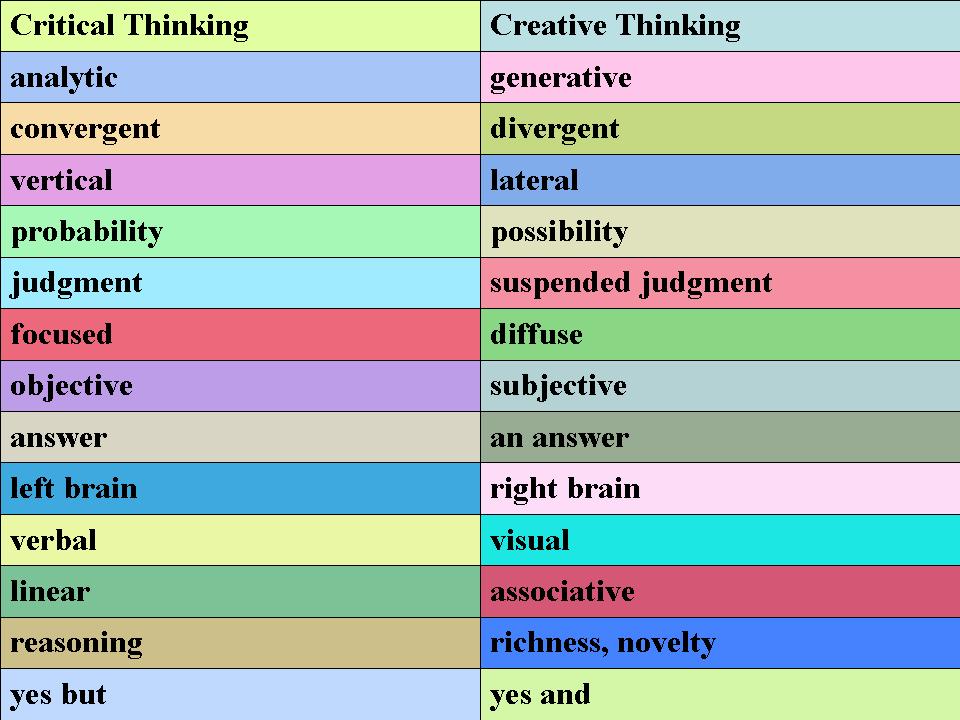The Synergy of Creative and Critical Thinking
Critical thinking is the active, persistent and careful consideration of a belief or form of knowledge. It includes analysis and judgments about the ideas and conditions that support beliefs and the conclusions that follow. Critical thinking involves analyzing and evaluating one’s own thinking and that of others. It is subject to intellectual standards, including clarity, accuracy, precision, relevance, significance, depth, breadth, logic, and fairness. Creative thinking is the generation of new ideas within or across disciplines. It draws upon or breaks rules and procedures in those disciplines and actively engages students in bringing together existing ideas into new configuration; developing new properties or possibilities for something that already exists; and discovering or imagining something entirely new. Standards for judging creative thinking include originality, appropriateness, flexibility, and contribution to the domain. Compare this depiction fom the NCSU Th!nk QEP [Quality Enhancement Plan] Definitions

Slatta comment: Historical study lends itself to this combination of thinking approaches. It requires critical evaluation of sources and close attention to detail (quoting primary sources faithfully, accurately citing sources). It also requires "big picture" conceptualizing to give specific events context and meaning. Historical analysis is always a creative process, striving to offer new insights into events of the past. More elaboration, excerpted from Preparing Creative and Critical Thinkers by Donald J. Treffinger
"Creative thinking involves searching for meaningful new connections by generating many unusual, original, and varied possibilities, as well as details that expand or enrich possibilities. Critical thinking, on the other hand, involves examining possibilities carefully, fairly, and constructively�focusing your thoughts and actions by organizing and analyzing possibilities, refining and developing the most promising possibilities, ranking or prioritizing options, and choosing certain options. Generating many possibilities is not enough by itself to help you solve a problem. Similarly, if you rely on focusing alone, you may have too few possibilities from which to choose. Effective problem solvers must think both creatively and critically, generating options and focusing their thinking. Both generating and focusing involve learning and applying certain guidelines (attitudes and habits of mind that support effective thinking) and tools. Let's first look at the guidelines for generating and focusing, and then consider a number of specific tools." Here's another version of the same concepts: "Creative thinking is making and communicating connections to: think of many possibilities; think and experience in various ways and use different points of view; think of new and unusual possibilities; and guide in generating and selecting alternatives." "Critical thinking is analyzing and developing possibilities to: compare and contrast many ideas; improve and refine ideas; make effective decisions and judgments; and provide a sound foundation for effective action."